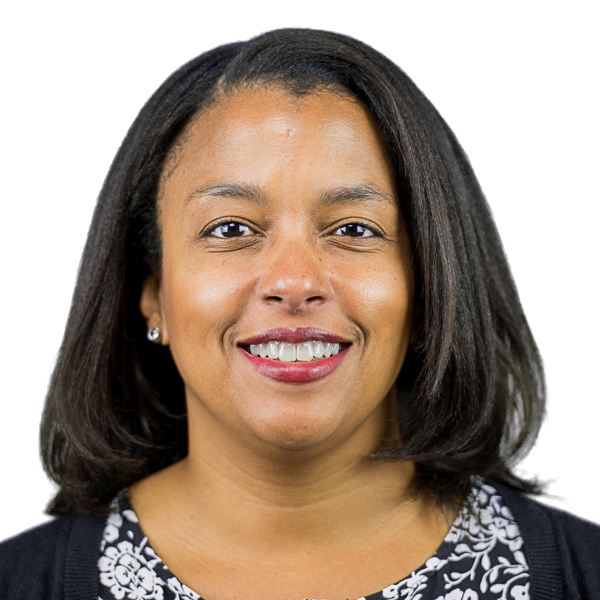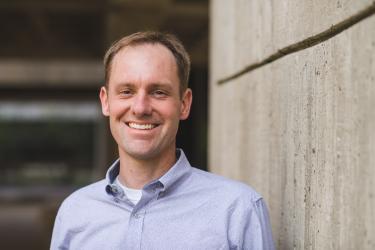Musculoskeletal Regeneration Research
Monday 18th September 2017
Speakers:
Eben Alsberg - Professor, Biomedical Engineering and Orthopaedic Surgery, Case Western Reserve University
The Alsberg laboratory focuses on engineering functional biologic replacements to repair damaged or diseased tissues in the body. They use the complex signals that are implicated in tissue morphogenesis, repair, and homeostasis as a template for the development of innovative biomaterials for tissue regeneration. Through the precise temporal and spatial presentation of soluble bioactive factors, mechanical forces, and biomaterial physical and biochemical properties, they aspire to create microenvironments that regulate cell gene expression and new tissue formation. Some areas of active investigation include controlling stem cell differentiation, delivering bioactive factors sequentially, developing spatially patterned constructs, understanding cell-cell interactions, and determining mechanical influences on cell function.
Treena Arinzeh – Professor, Biomedical Engineering, New Jersey Institute of Technology
Treena Livingston Arinzeh, PhD, professor of biomedical engineering at NJIT, has earned national recognition for her commitment to making adult stem cell therapy a future reality. Her research interests include applied biomaterials and tissue engineering; cell-biomaterial interaction; materials processing; surface characterization and modification of biomaterials; materials testing; in vivo models; tissue-engineering scaffolds for repair of bone and other related musculoskeletal tissues; and nerve tissue regeneration utilizing stem cells.
Bin Duan - Assistant Professor, Internal Medicine - Cardiology, University of Nebraska Medical Center
The focus of Duan’s research integrates novel biomaterials, advanced biofabrication of tissue engineered scaffolds, tissue constructs and tissue models , controlled growth factor delivery strategy and bioreactor. He has implemented rapid prototyping (RP) techniques to fabricate nanocomposite scaffolds with complex architectures and porous structures for bone tissue engineering and to generate living hydrogel valve conduits with anatomical architecture and mechanical heterogeneity for heart valve regeneration. He investigates the mechanisms through which the local microenvironment, including adhesion ligand density, matrix component and stiffness , regulates several aspects of valve interstitial cell (VIC, the most prevalent cells in the heart valve leaflets) behaviors like cell spreading, migration, and differentiation (both physiological and pathological) . Duan uses this information to direct the differentiation of mesenchyal stem cells (MSC) towards valve specific phenotypes and compare the capacity and efficiency of different MSC sources. He is actively developing novel 3D hydrogel Systems with biochemical and biophysical tunability for mimicking extracellular matrix ( ECM ) to appropriately control MSC fate and for precisely replicating in vivo pathological microenvironments in vitro.
Andrew Dudley - Associate Professor, Genetics, Cell Biology and Anatomy, University of Nebraska Medical Center
Research in the Dudley laboratory seeks to uncover the mechanisms that regulate the development and homeostasis of musculoskeletal tissues using methods from embryology, molecular biology, cell biology, genetics, and tissue engineering, with the goal of generating novel therapies for regenerative medicine.
Corey Neu - Associate Professor, Mechanical Engineering, University of Colorado Boulder
The Soft Tissue Bioengineering Laboratory run by Dr. Neu at CU Boulder is dedicated to technology development for fundamental study and engineering of connective and cardiac tissues. They desire to provide new therapies that emerge from a careful study of basic mechanobiology, to ultimately treat the millions of people worldwide afflicted with disorders of the connective and cardiac tissues, including arthritis and fibrosis, and to promote basic quality of life in humans. Their objectives are to create new scalable and integrated imaging tools to noninvasively probe dynamic functions in tissues and cells, understand the fundamental roles of physical factors in the growth, development, and maintenance of tissues, and develop novel strategies for the repair and regeneration of tissue structure and function. Mechanics is a central theme of the lab, with our basic science focus on mechanisms of physical force regulation, systems of stress and strain transfer over hierarchical scales, relationships between force and gene expression, inverse problems, and tissue stiffness, energy storage, and tribology. His lab routinely engages in interdisciplinary activities to solve complex interface problems, spanning multiple engineering and biology disciplines, including mechanical, electrical, micro/nanotechological, biochemical, and physiological subspecialties.
Rebecca Wachs - Assistant Professor, Biological Systems Engineering, University of Nebraska - Lincoln
Dr. Wachs earned her PhD in Biomedical Engineering from Rensselaer Polytechnic Institute on the mechanisms of low back pain, and her BS in Mechanical Engineering from Worcester Polytechnic Institute. She worked for a medical device company, RTI Surgical, Inc., as a senior engineer in research and development. For the past two years, Wachs has pursued postdoctoral studies at the University of Florida in neural engineering. Wachs’ research vision is to use her diverse skills in orthopedics, neural engineering, and clinical translation to develop novel interventions for the treatment of low back pain. She proposes to target this pain with three major arms of research: engineered biomaterials to prevent and reverse nerve growth, targeted delivery of antioxidants to modulate inflammation, and development of in vitro test beds to mimic disease progression.
Jingwei Xie - Assistant Professor, Surgery-Transplant, University of Nebraska Medical Center
Xie laboratory’s research interests center on the synthesis, surface modification, self-assembly of materials at nanometer scale to address problems in the field of tissue engineering, regenerative medicine and drug/gene delivery. Our research programs are built upon interdisciplinary subjects including materials science, engineering, biology and medicine. We develop novel, smart biomaterials with well-controlled composition, structure and functional properties. We employ analytical tools in materials science, biology and medicine to characterize these biomaterials as either scaffolds or drug/gene carriers. Specifically, we are interested in use of nano-structured materials together with signaling molecules to regulate cell/stem cell behaviors for regenerating various types of tissues including tendon-to-bone insertion site, cartilage, bone, skin, cardiac muscle, and nerve. We are also interested in developing nano-structured materials for enhancing survival, proliferation, and function of human islets in vitro and in vivo. Additionally, we are interested in developing nanofibrous materials as local drug delivery devices for prevention of surgical site infection.
Xinping Zhang – Associate Professor, Center for Musculoskeletal Research, University of Rochester Medical Center
Research in Zhang's laboratory focuses on skeletal repair and reconstruction, which integrates a number of important research topics in musculoskeletal research. These topics include biology of bone/cartilage development, cell signaling, stem cell biology and bone tissue engineering. Using transgenic mouse models, primary culture of progenitor cells isolated from bone callus, and the-state-of-the-art imaging approaches, they are currently trying to understand how molecular and cellular signals are integrated to provide synergistic action for repair and regeneration. The long term goal of her laboratory is to be able to combine progenitor cells, molecular signals and bioscaffolds in a tissue-engineering construct to enhance bone repair and reconstruction.
Teresa Zimmers - Associate Professor, Surgery, Indiana University School of Medicine
Cachexia, recognized by progressive loss of skeletal muscle and adipose tissue, contributes directly to morbidity and mortality in diseases as diverse as organ failure, AIDS, burn, trauma and cancer. Indeed, cachexia itself and not other effects of the tumor is thought to be the cause of up to 1/3 of all cancer deaths. Relatively little is understood regarding the molecular and cellular pathways leading to weight loss and dysmetabolism in cachexia and currently there are no approved, effective therapies.
Dr. Zimmers' group, working with a large and diverse group of collaborators, seeks to fill that knowledge gap by using novel animal models and correlative phenotypic and molecular data from patients to identify molecular, cellular and organ system mechanisms leading to cachexia. Her current work focuses upon studying these novel molecular and organ cross-talk pathways in cell cultures and animal models. At the same time we are undertaking clinical studies in cancer cachexia. At this time they are searching for funding for a proposed clinical trial to treat cachexia in patients with pancreatic cancer as well as to examine the systemic response and rates of muscle and fat wasting in an open trial in pancreatic cancer.

